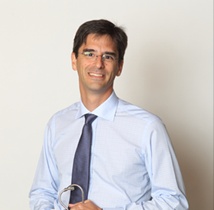
18 Jan Heart Failure: Long-Term Outcomes of Resynchronization–Defibrillation
MedicalResearch.com Interview with:

Dr. Sapp
John Sapp MD FRCPC FHRSHeart Rhythm, Division of Cardiology
QEII Health Sciences Centre
Dalhousie University
MedicalResearch.com: What is the background for this study?
Response: Cardiac resynchronization is a robust therapy for heart failure in patients with ventricular dysfunction, left bundle branch block and left bundle branch block. It has been shown to improve heart failure status, symptoms, survival and reduce new onset ventricular arrhythmias for appropriate candidates. The RAFT study (NEJM 2010) enrolled patients with functional class II and III heart failure, wide QRS duration on ECG and reduced left ventricular ejection fraction, and demonstrated a reduction in heart failure hospitalization and mortality during a mean follow-up of 44 months. The long-term outcomes are not known.
MedicalResearch.com: What are the main findings?
Response: The main findings of the RAFT Long-Term study were that, for patients with reduced ejection fraction, heart failure, and widened QRS duration on ECG, the improvement in survival conferred by randomization to therapy with a cardiac resynchronization defibrillator rather than a standard defibrillator persisted during a median of nearly 14 years of follow-up.
The secondary outcome of the composite of mortality, heart transplant or implantation of a left ventricular assist device was also prolonged.
MedicalResearch.com: What should readers take away from your report?
Response: I think the key take-away points of this study are ventricular dyssynchrony can play a very important role in heart failure, and that resynchronization provides a robust improvement. This therapy works by a mechanism that is quite different from drug therapies for heart failure, and appears to provide an enduring impact. The magnitude and duration of this effect should be considered when considering cardiac resynchronization therapy, and in counseling patients.
It is worth noting that the RAFT trial included some patients with atrial arrhythmias, and with less severely widened QRS complexes, who might have received less benefit from CRT, so the long-term effect might be even more significant for ideal candidates.
MedicalResearch.com: What recommendations do you have for future research as a results of this study?
Response: Cardiac resynchronization in the RAFT study was accomplished with biventricular pacing via a right ventricular lead and a second ventricular lead placed on the epicardial left ventricle via the coronary sinus. It will be worth studying whether similar or perhaps superior effects can be achieved with newer conduction system pacing techniques.
Citation: Long-Term Outcomes of Resynchronization–Defibrillation for Heart Failure
John L. Sapp, M.D., Soori Sivakumaran, M.D., Calum J. Redpath, M.B., Ch.B., Ph.D., Habib Khan, M.D., Ratika Parkash, M.D., Derek V. Exner, M.D., Jeff S. Healey, M.D., Bernard Thibault, M.D., aurence D. Sterns, M.D., Nhat Hung N. Lam, B.Sc., Jaimie Manlucu, M.D., Ahmed Mokhtar, M.D., et al., for the RAFT Long-Term Study Team
January 18, 2024
N Engl J Med 2024; 390:212-220
DOI: 10.1056/NEJMoa2304542
The information on MedicalResearch.com is provided for educational purposes only, and is in no way intended to diagnose, cure, or treat any medical or other condition.
Some links may be sponsored. Products are not endorsed.
Always seek the advice of your physician or other qualified health and ask your doctor any questions you may have regarding a medical condition. In addition to all other limitations and disclaimers in this agreement, service provider and its third party providers disclaim any liability or loss in connection with the content provided on this website.
Last Updated on January 18, 2024 by Marie Benz MD FAAD
